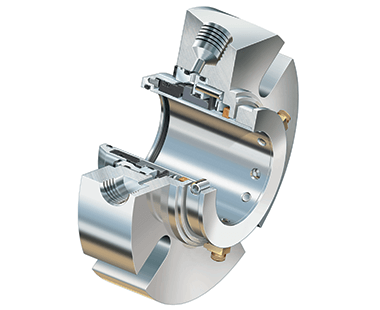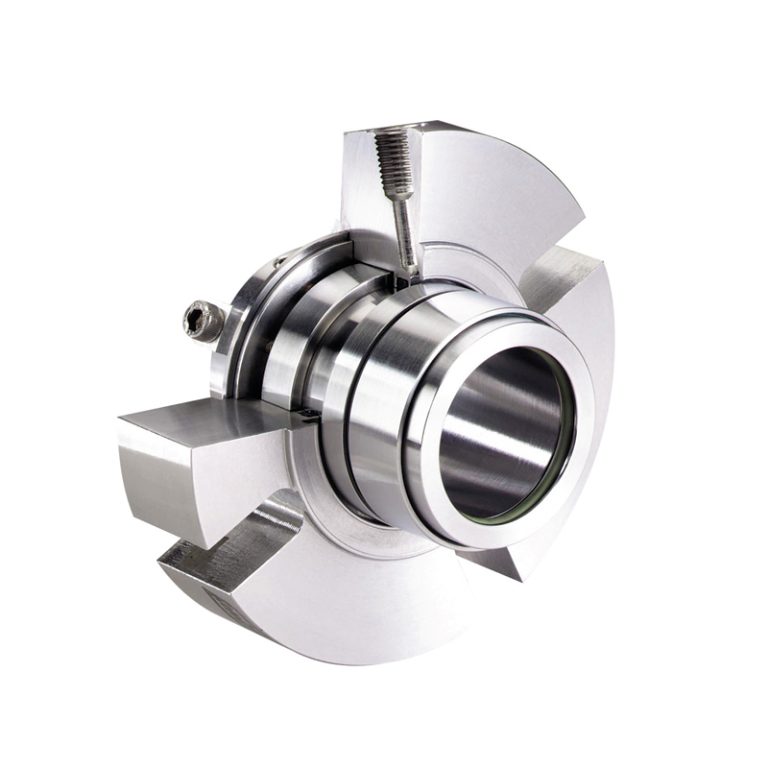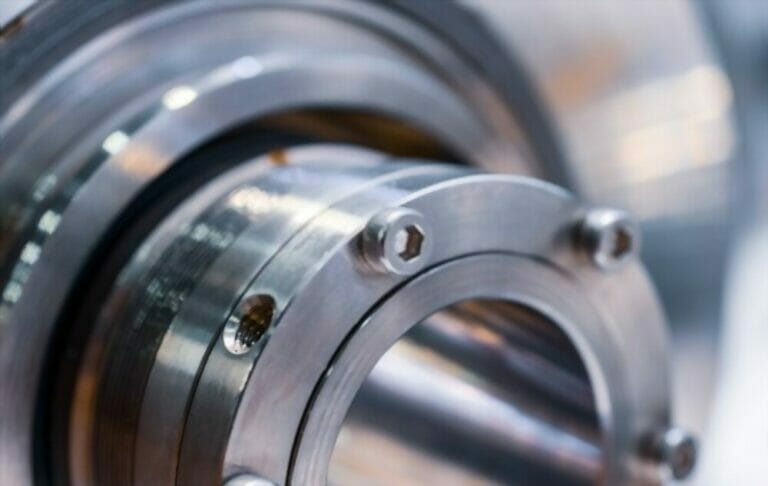How to choose correct mechanical seal face material?
The performance of mechanical seals largely depends on the materials used in their construction, particularly the seal face material. Choosing the right mechanical seal face material is crucial in achieving optimal performance and preventing downtime and maintenance costs.
In this article, we will delve into the importance of the right mechanical seal face material selection and how it affects the overall efficiency of industrial application.

Common mechanical seal face materials
Different types of seal face materials are available to offer specific properties, depending on the application. Commonly used materials include carbon, ceramic or carbide.
Carbon face materials are known for their good lubrication properties and excellent chemical resistance due to their natural graphite content. Ceramic face materials, on the other hand, are known for their high-temperature resistance and superior quality, making them ideal for harsh application environments. Carbide face materials improve the resistance to wear and abrasion.
The choice of seal face material should be made based on factors such as temperature, fluid type, lubrication and chemical resistance, to ensure optimum performance of the mechanical seal.
Carbon / Graphite / CAR (Black)
Carbon has excellent wear and friction characteristics, which makes it a suitable material for use in mechanical seals, where it is used to provide a sliding or rotating seal between two surfaces. In addition to its excellent mechanical properties, carbon is also resistant to chemical, thermal degradation and dry running, meaning that it can withstand harsh operating conditions. Its low coefficient of thermal expansion also means that carbon seals provide good temperature stability in high-temperature applications. Carbon seals can be used in a wide range of industrial applications, including pumps, compressors, mixers, and other industrial equipment.

Ceramic Alumina / CER (White)
Ceramic alumina is a common material used in mechanical seals due to its excellent properties, such as high strength, hardness, and wear resistance, even at high temperatures. It is a ceramic material that is made of aluminum oxide, which is formed into various shapes and sizes to suit specific applications in mechanical seals. Sealing faces made of ceramic alumina are typically used for abrasive fluids or applications that require high reliability and long service life. The low friction and high wear resistance of ceramic alumina enable seals to operate successfully in challenging conditions that would otherwise cause premature wear or failure. Additionally, the corrosion resistance of ceramic alumina makes it ideal for working with acidic or alkaline fluids, ensuring that the seal will remain intact and perform optimally for years.

Silicone Carbide / SIC (Grey blue)
Silicon Carbide is a highly durable and wear-resistant material that has become a popular choice for use in mechanical seals. Its high hardness and low coefficient of friction make it an ideal material for use in sealing applications where there is a lot of wear and tear. Silicon Carbide also has good thermal conductivity, which helps to dissipate heat from the seal face, reducing the risk of overheating and seal failure. Additionally, its low coefficient of thermal expansion means that it is less likely to experience cracking or deformation when exposed to high temperatures.

Tungsten Carbide / TC (Metallic luster)
Tungsten carbide is a highly popular material choice in mechanical seals due to its exceptional hardness, high corrosion resistance, and superior wear resistance. The unique properties of this metal material allow tungsten carbide to withstand extreme pressure and temperature conditions, making it ideal for use in mechanical seals that require long-lasting durability and reliability. Tungsten carbide is commonly used in sealing applications in industries such as oil and gas, chemical processing, and water management. The material’s high temperature resistance also allows it to function efficiently in environments with high friction and heat, enabling it to withstand wear and tear over extended periods. Tungsten carbide is a preferred material for mechanical seals because of its longevity, ability to withstand rapid wear, and cost-effectiveness over time.

How to choose correct seal face material for pump?
When choosing the seal face material, several factors must be considered, including the type of medias that the seal will be in contact with, the pressure and temperature of the application, and the expected lifespan of the seal. Different materials have varying wear and chemical resistance properties, as well as thermal and mechanical tolerances. The four primary types of seal face materials are carbon, ceramic, tungsten carbide, and silicon carbide. Carbon is suitable for low-temperature applications, while ceramic is better suited for high pressure and temperature environments. Tungsten carbide may be used when handling abrasive media, and silicon carbide is often preferred for corrosive applications. Additionally, it is important to consider the surface finish of the seal face, its geometry, and its lubrication method to ensure optimal performance and longevity. Overall, understanding the demands of the application and the properties of the different seal face materials is essential for making the appropriate choice.
Which is better silicon carbide or tungsten carbide seals?
The decision of whether to use silicon carbide or tungsten carbide seals depends on the specific application’s requirements. Generally, tungsten carbide seals are suitable for low-pressure environments and can handle high temperatures or abrasive substances. In contrast, silicon carbide seals have superior chemical resistance and are ideal for high-pressure applications where a high degree of hardness is necessary. Tungsten carbide is also more cost-effective than its silicon carbide counterpart, making it a popular choice for general use. However, when it comes to harsh or corrosive environments, silicon carbide seals are considered superior to tungsten carbide seals. Ultimately, the selection between the two carbides will come down to the intended use and the specific requirements of the application.



